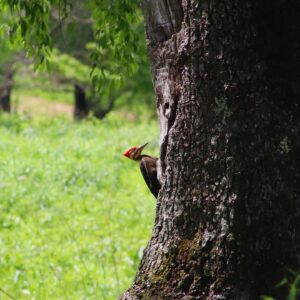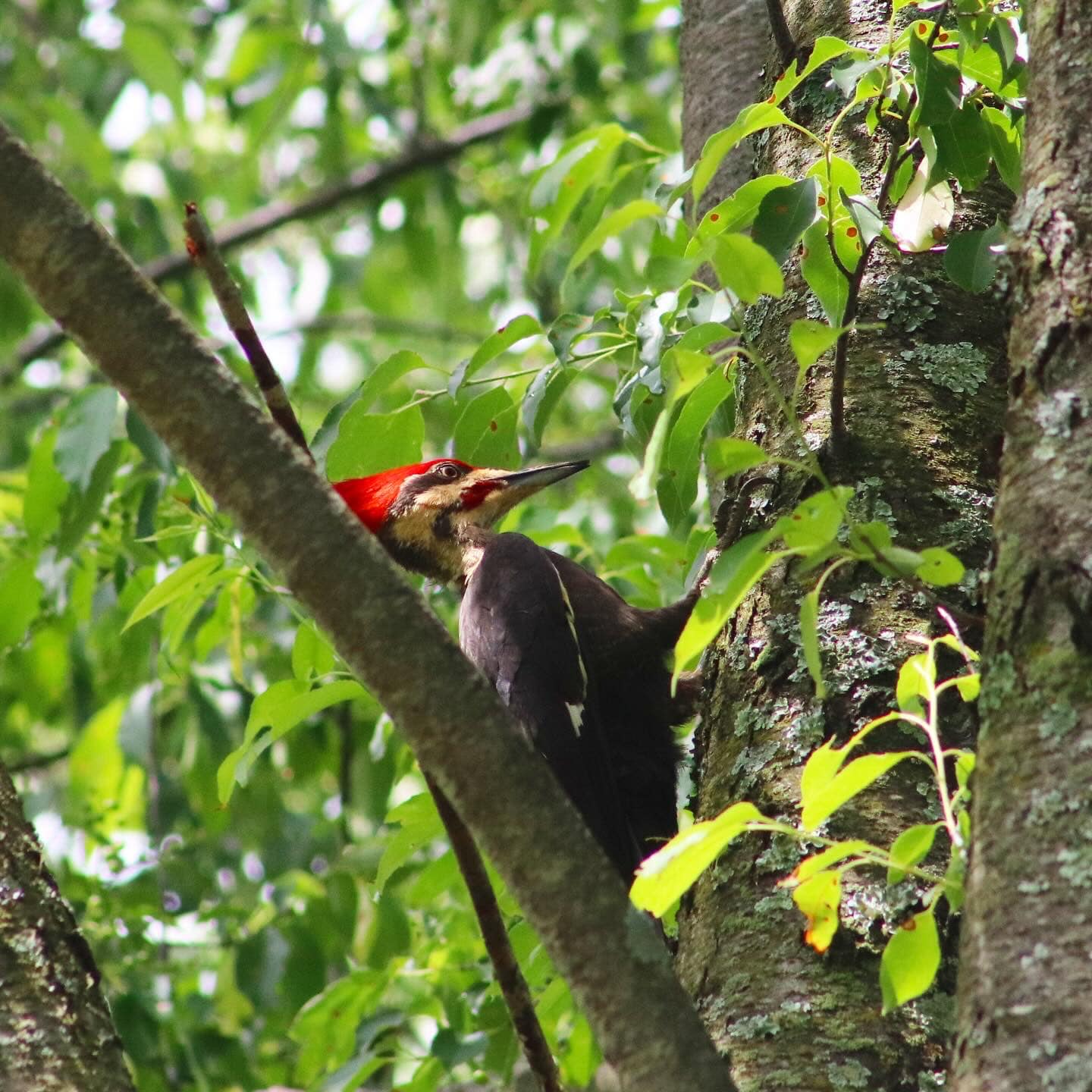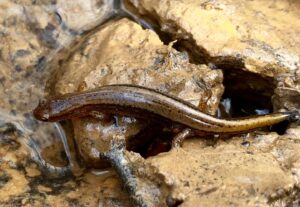by Jacob Crider
The Pileated Woodpecker (Dryocopus pileatus) is Kentucky’s largest extant woodpecker species, attaining the size of an adult crow and boasting wingspan of over 2 feet. They are unmistakable with their vivid red crest and bold white wing bars. Male Pileated Woodpeckers will possess a red cheek stripe, and females will have darker colored eyes. Their calls are a slower paced laughing call similar to Northern Flickers and Cooper’s Hawks, but usually have a lower pitch.
Often heard drumming loudly throughout dense forests, Pileated Woodpeckers inhabit woodland habitats to breed, nest, and forage. Their diet consists of mostly ants, but they will also prey on a variety of insects, fruits, and nuts. They prefer to feed on insects within tree bark and will bore into the bark to prey on them with their long and sturdy bill. They are cavity nesters and are capable of creating impressive cavities in living and dead trees. While constructing these arboreal homes and drumming to announce territory, they actually wrap their own tongues around their brain while pecking to prevent injury!

Pileated Woodpeckers are a great example of a keystone species in the Eastern Deciduous Forest. The tree cavities created by these woodpeckers are large enough to host many other species of animals such as flying squirrels, Wood Ducks, Eastern Screech Owls, chickadees, titmice, Prothonotary Warblers, treefrogs, and many other arboreal animals. Making these homes possible to other creatures makes them an important “keystone” in the forest community. Without them other animals would have difficulties finding a proper habitat to survive.
At CMNP, Pileated Woodpeckers can be spotted throughout the preserve, but are most frequently encountered in our woodland areas. They will occasionally visit our bird blind feeders and are very fond of our Cherry/Oak Line adjacent to our recreation fields.



